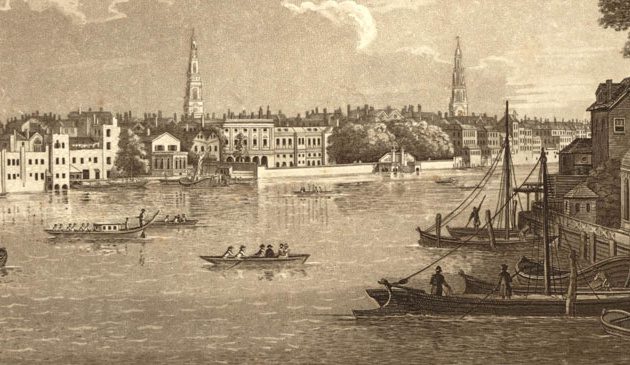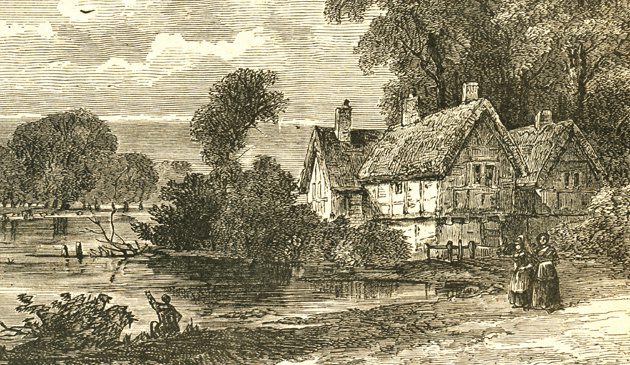Samuel Pepys

Samuel Pepys, taken from a portrait by Sir Godfrey Kneller painted in 1689 and now part of the National Maritime Museum’s collection at Greenwich.
Pepys read around one book each month through much of his adult life, building an extensive library. The Restoration was a period of scientific progress. He purchased a microscope and built a small collection of other technical instruments. Knowing many of its members, he joined the Royal Society, the hotbed of scientific ideas, in 1665. Pepys also had a great love for music, could play several instruments, and was a reasonable baritone singer.
The performance of plays had been banned by the Puritans during the Commonwealth but was to blossom again after the Restoration. Pepys attended his first play in 1660 and in January 1661 was present at one of the earliest performances by an actress in an English theatre. He enjoyed the company of actors and actresses, including Nell Gwynne.
Pepys also delighted in male comradeship and had a great circle of friends from amongst the nobility and London’s merchant and professional classes. One man whose company he found particularly stimulating was his fellow diarist John Evelyn. Others included Sir Christopher Wren and the wealthy and cultured London merchants Sir John Banks and Sir James Houblon.
London’s two great disasters of his time, the Great Plague and the Great Fire, were both captured by Pepys in his diaries. His wife was dispatched to safety at Woolwich during 1665 but throughout the months of the Plague he remained in London and described the terrible scenes as people died around him, even at one point the driver of the carriage in which he was travelling.
Witnessing the Great Fire of September 1666 at first-hand it was Pepys who travelled upriver by boat on the first night to break the news of the disaster to the King and the Duke of York. A magnificent dinner had been arranged at Seething Lane for the following night at which Pepys was to show off his splendid new book cabinets, but the celebration took place with houses in flames only streets away. Fortunately, the wind was blowing in a westerly direction and his apartments at the Navy Board were narrowly spared while much of the city was consumed during those three days.
Over a number of years, toiling long hours at the Navy Board, his sight deteriorated to the point where Pepys could barely see to read and write. By 1669 the entries in his diary were becoming shorter and on 31st May of that year, mistakenly believing he would lose his sight, he made his final entry. In August he decided to take a lengthy holiday with his wife, travelling for two months to France and the Low Countries. While in Brussels Elizabeth fell ill and she died returning to London, aged just 29 years, and was buried at St. Olaves church, Hart Street.
The King planned to go to war with the Dutch, together with his French allies. A huge joint naval force engaged them off the coast of East Anglia in 1672 but with disastrous results, including the death of Pepys’s original benefactor and relation, Edward Montagu, whose funeral took place at Westminster Abbey. The defeat led to Pepys having to defend the Navy Board yet again in an inquiry in 1670.
When the Duke of York was forced to resign his position in 1673 the naval hierarchy was reorganised, and Pepys was promoted to secretary to the Lord High Admiral. Using all his talents, experience and contacts he set about ensuring that he was at the centre of the entire administration, with a direct influence on the King. In early 1674 he moved himself and the Admiralty to Derby House at Westminster where they could be closer to Parliament and Charles’s palace at Whitehall. Further honours lay ahead. During the next few years he became master of the Clothworkers’ Company, a governor of Bridewell Prison, and master of Trinity House. His income was boosted by the right to charge a fee of 25 shillings for each English ship trading in the Mediterranean.
During his many dealings with Parliament Pepys came to the conclusion that the MPs who controlled the funding for the navy were ignorant of its needs. In order to change that he determined to join their ranks. After some failed attempts he won an election at Castle Rising. When he took his seat in January 1674, however, he found himself at the centre of the anti-papist storm raging in Parliament. As a former loyal servant of the Catholic Duke of York Pepys became an ideal target for the Anglican opposition, led by the Earl of Shaftesbury. The political manoeuvrings forced Pepys to resign his position at the Admiralty.
Worse was to come. In order to discredit him further false stories were concocted that he was in league with the French, allies to the King but despised by the opposition. Pepys and his brother-in-law, his supposed accomplice, were arrested and sent to the Tower of London and then to Marshalsea Prison before being allowed out on bail. During 1680 political orchestrations by the King against the Shaftesbury opposition were beginning to pay dividends, however. Shaftesbury and his Whig followers were branded as subversives and Parliament dissolved. Furthermore, their underhand methods of discrediting Pepys had come to light and the long-anticipated court case against him collapsed.
Throughout that period Pepys continued to take a keen interest in the Royal Society and in recognition of his efforts he was created President of the organisation in 1685. (During that time member Isaac Newton published his outstanding work Principia under the imprimatur of Pepys as the Society President).
In 1682 Charles decided to abandon Britain’s colony at Tangier and sent Pepys to supervise the withdrawal. It was there that he learnt how discipline in the Royal Navy had collapsed since his departure from the Admiralty and on his return immediately reported his findings to the King. Not long after, Charles took the navy under his own personal control, dismissed the incumbent officials and appointed Pepys as his Secretary for the Affairs of the Admiralty. Pepys set about preparing a full report on the perilous state of the naval forces but in 1685, just as it was ready to be presented, Charles unexpectedly died. Pepys was one of those who bore the royal canopy during the coronation procession of the new monarch, James II, from Westminster Hall.


